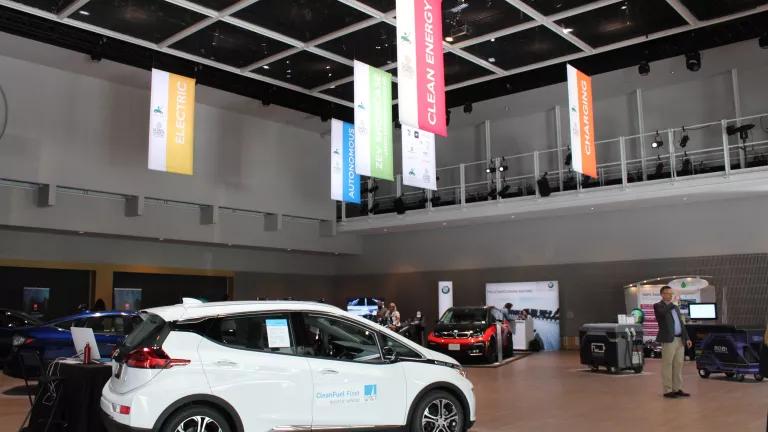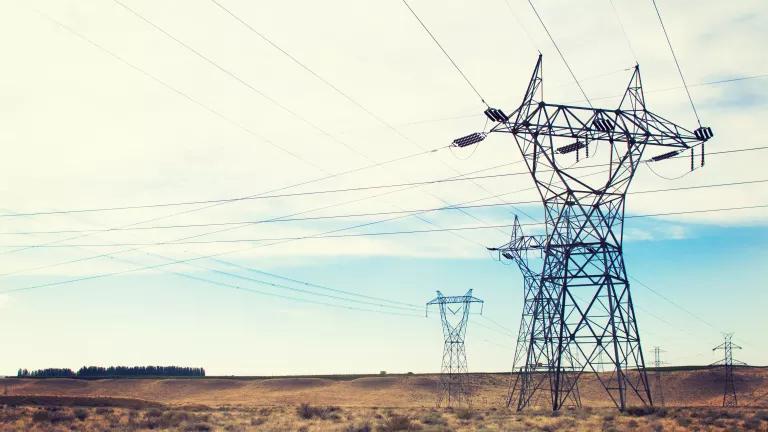Fast-Tracking Global Electric Vehicle Deployment

Today, we are seeing a vital movement to tackle one of our toughest challenges—how to move from a global transportation system made up of 1.3 billion cars and trucks that pollute our air to a system that is truly zero emitting.
The world is at a tipping point when it comes to moving our transportation sector to zero emissions. Tipping points can be a precarious place: this is not a time to take continued progress for granted, but a time to dig in and ensure that we can succeed.
At the Global Climate Action Summit this week in San Francisco, we expect to see additional commitments made to advance zero emission transportation. This is critical in the face of a fossil fuel industry that does not want to see us move away from the internal combustion engine.
Smart and forward-looking leadership begets good policy, and that good policy can spur clean energy to reach a tipping point. We saw this happen for energy efficiency reached in the 90s, we have seen it happen for renewable electricity over the past decade, and now we have an historic opportunity to reach a tipping point for electric vehicles (EV).
Our opportunity is several-fold.
We need to work together to accelerate the deployment of electric vehicles at a global-scale, to drive down costs rapidly, improve performance, and displace the incumbent technology. This can be done by sharing information about how to craft the most effective policies across cities, states and countries. Sharing information and standardizing systems will help us move further, faster. Similar zero emission vehicle requirements from country to country. Phase outs of internal combustion vehicles around the world. Transit agencies and cities moving to 100 percent electric buses. This is how we get where we need to be.
In addition, we can work with the charging infrastructure industry and the electric industry, with cities and state governments across the world, with auto manufacturers and labor to establish a 21st century clean fuel infrastructure, extending plugs not only to every house and business, but to every car, truck, bus and more. And we can do this in a manner that allows us to integrate even more renewable electricity, is energy efficient and that makes electricity and vehicles more affordable.

But there are still some hills to traverse before we cross the tipping point. There are still barriers to overcome. The progress that we see as possible, is not inevitable. The incumbents in the current fossil fuel-based transportation system include a multi-trillion-dollar global oil industry. Many in the fossil fuel industry are not fans of zero emission vehicles. And here in the U.S. at a federal level, the Trump Administration has targeted clean transportation solutions as part of its climate change denial. Just several weeks ago, the Trump Administration announced rollbacks to the federal clean car and fuel economy standards, even against the wishes of many in the auto industry themselves.
So, despite zero emission vehicles being what makes sense economically, technologically, and environmentally, we can’t count on their progress as inevitable. We need to work to build the policies, infrastructure and public support to ensure a zero-emission transportation future.
We will need an engaged, effective coalition to rise-up to this challenge, to help overcome the barriers that face us today and to enact the set of policies that will help electric vehicles reach a tipping point.
I had the honor of joining with tens of thousands of people this past Saturday from all walks of life marching for climate, jobs and justice. From the parents worried about their kids’ future, to the indigenous communities looking to protect their land and natural resources, to residents concerned about the droughts and wildfires ravaging their communities, people joined together to demonstrate that we can rise-up for climate action, for equity, and for good jobs. Our eyes are now on the government and business leadership at the summit. There are clear next commitments they need to make to accelerate the adoption of zero-emissions transportation technology. This is a critical part of climate leadership.





